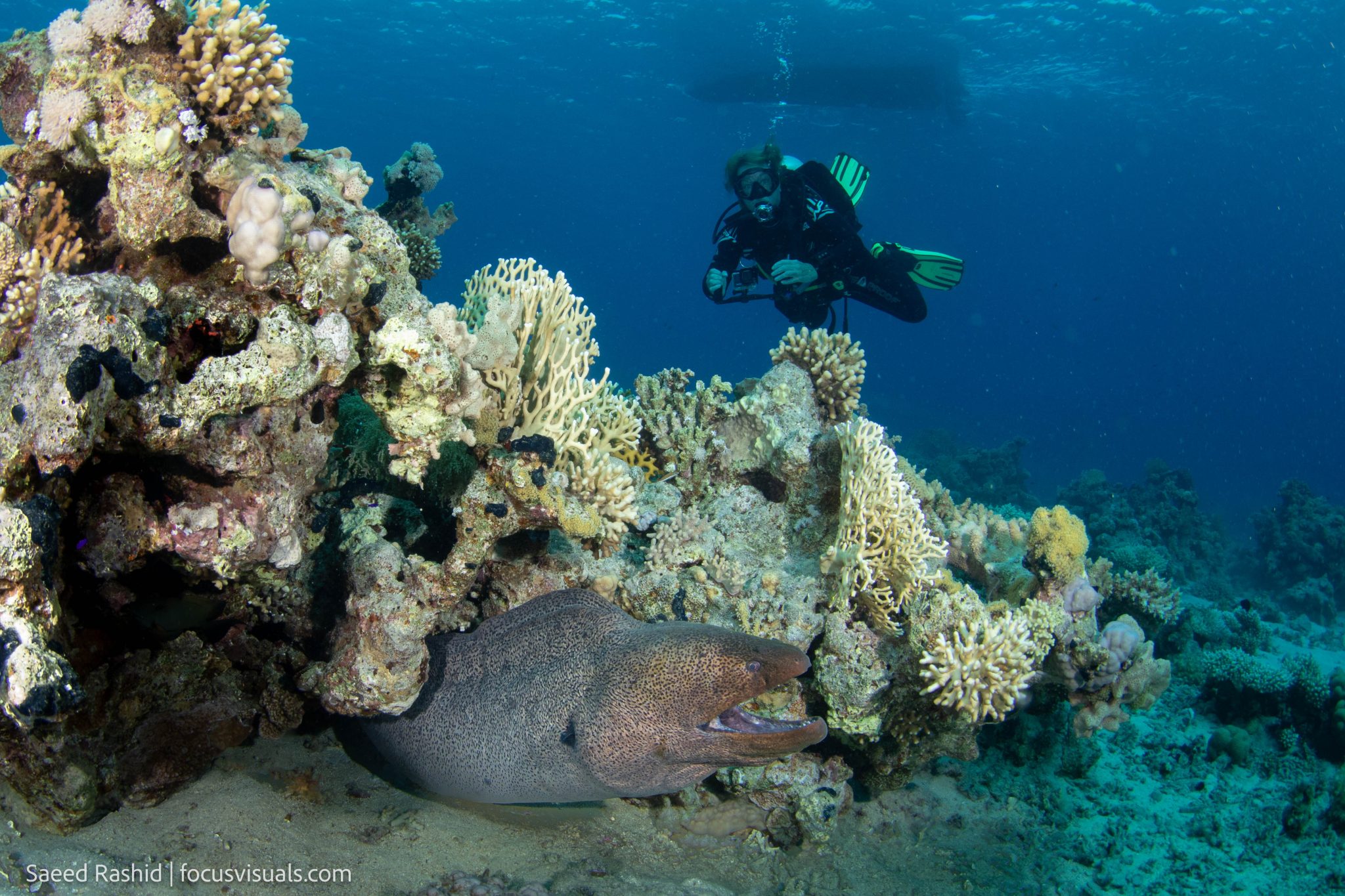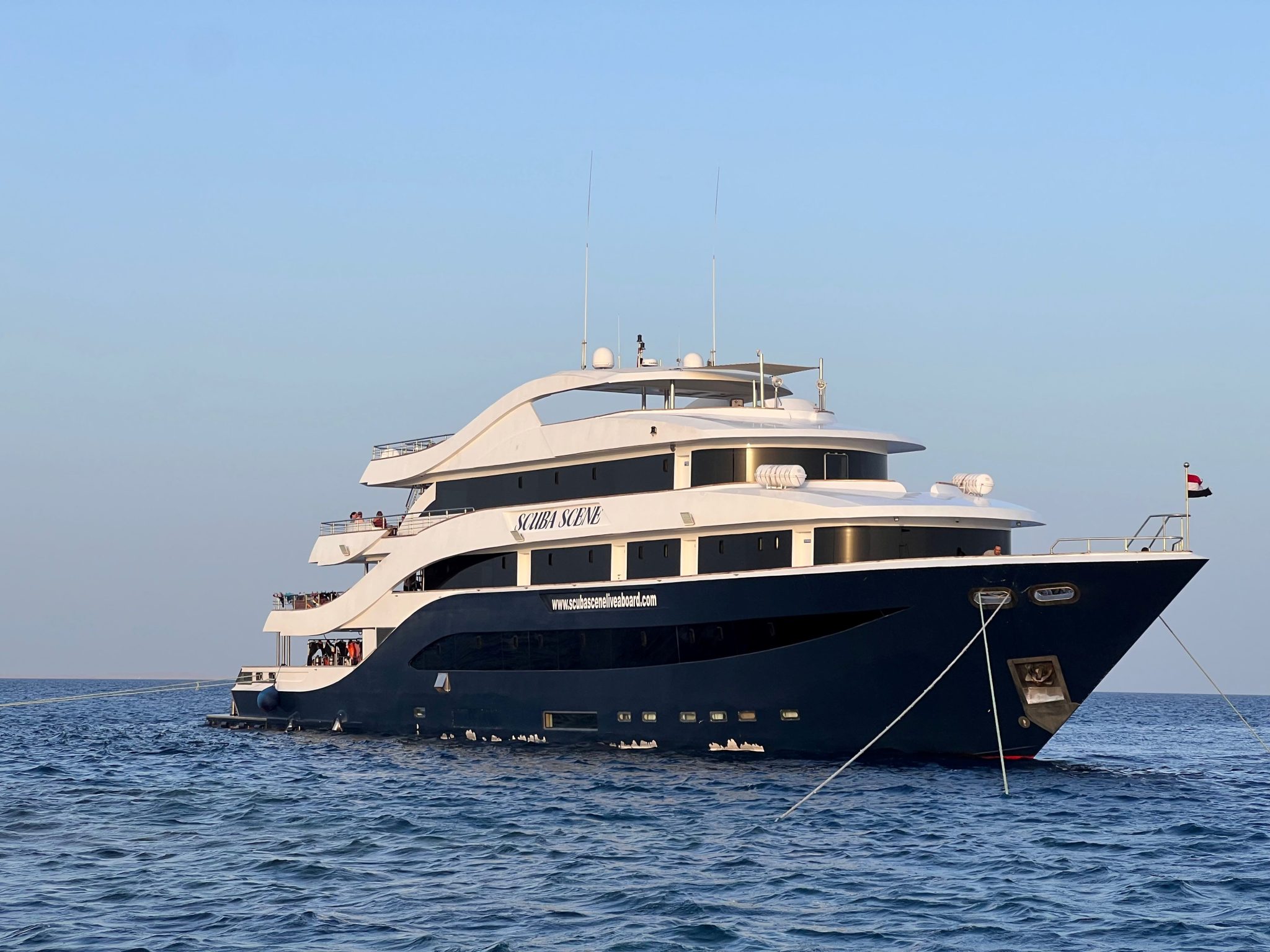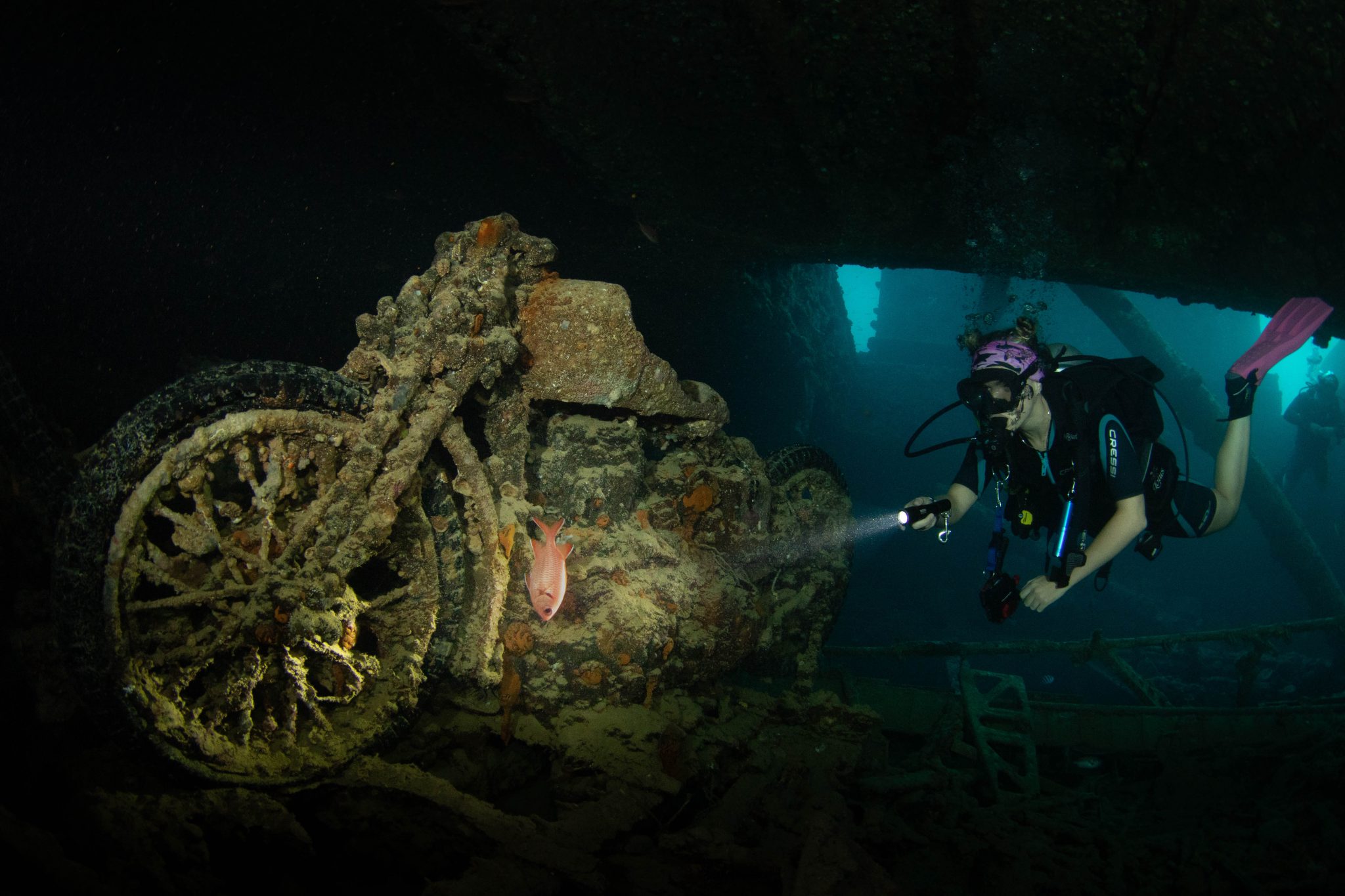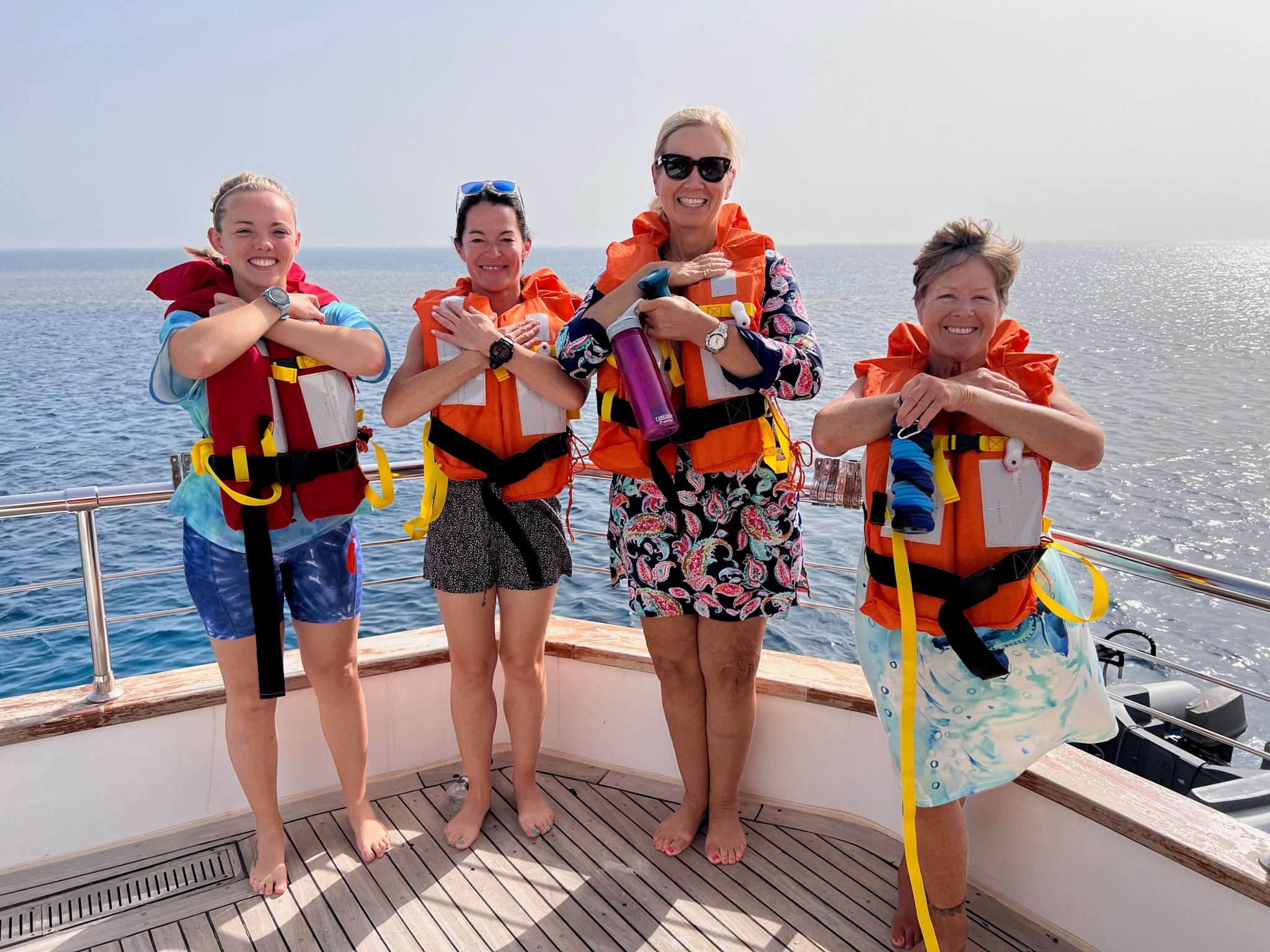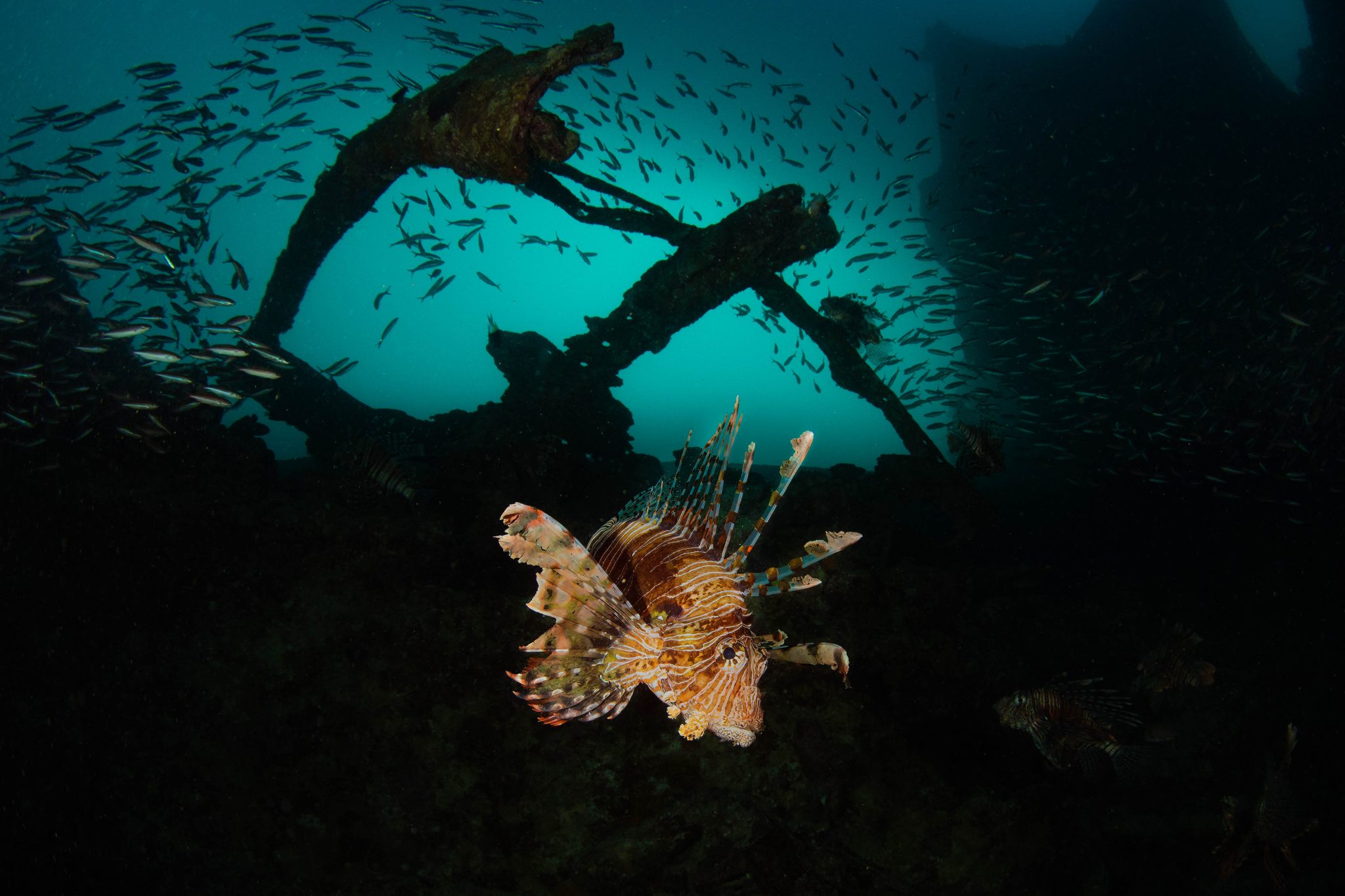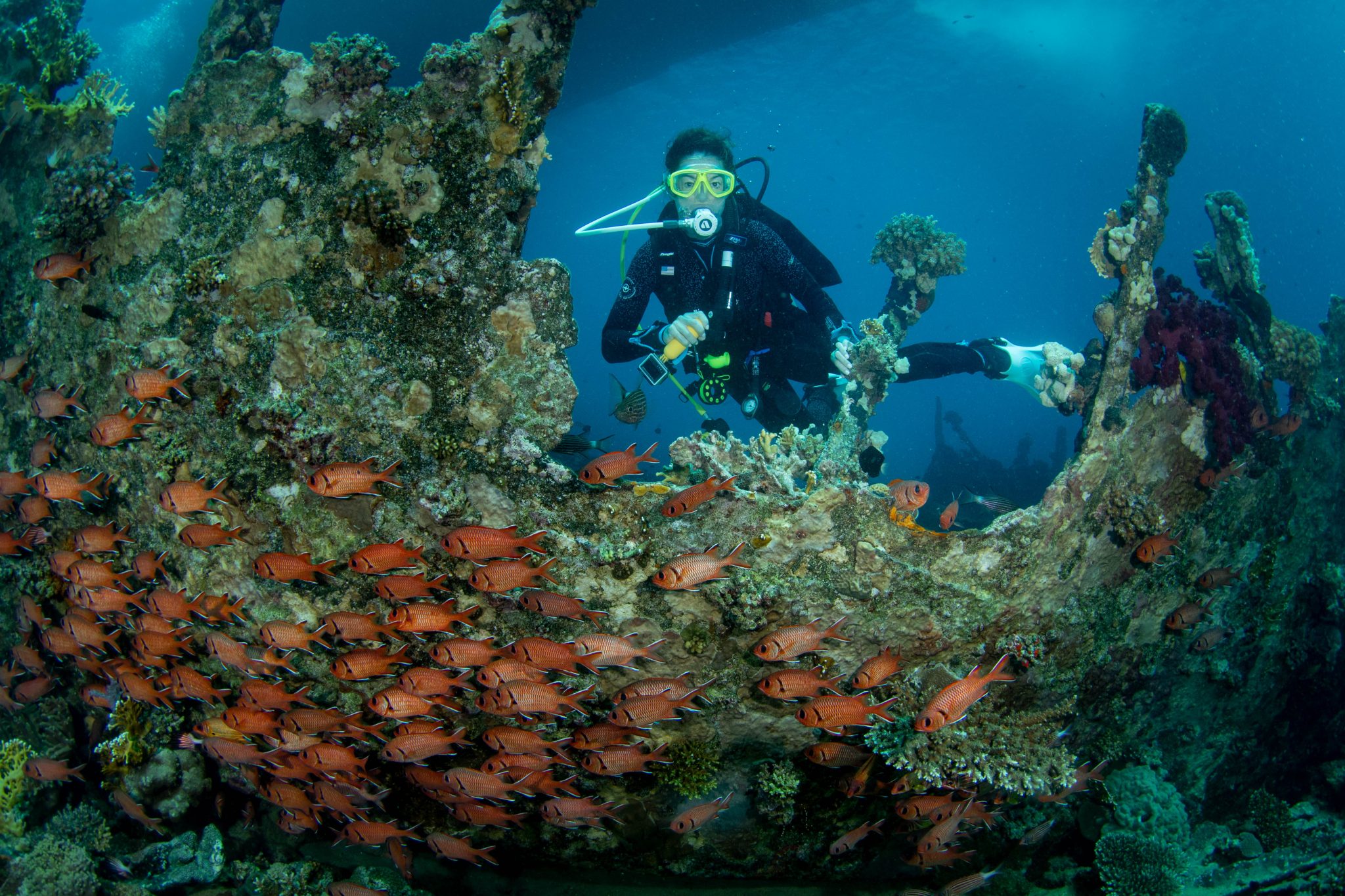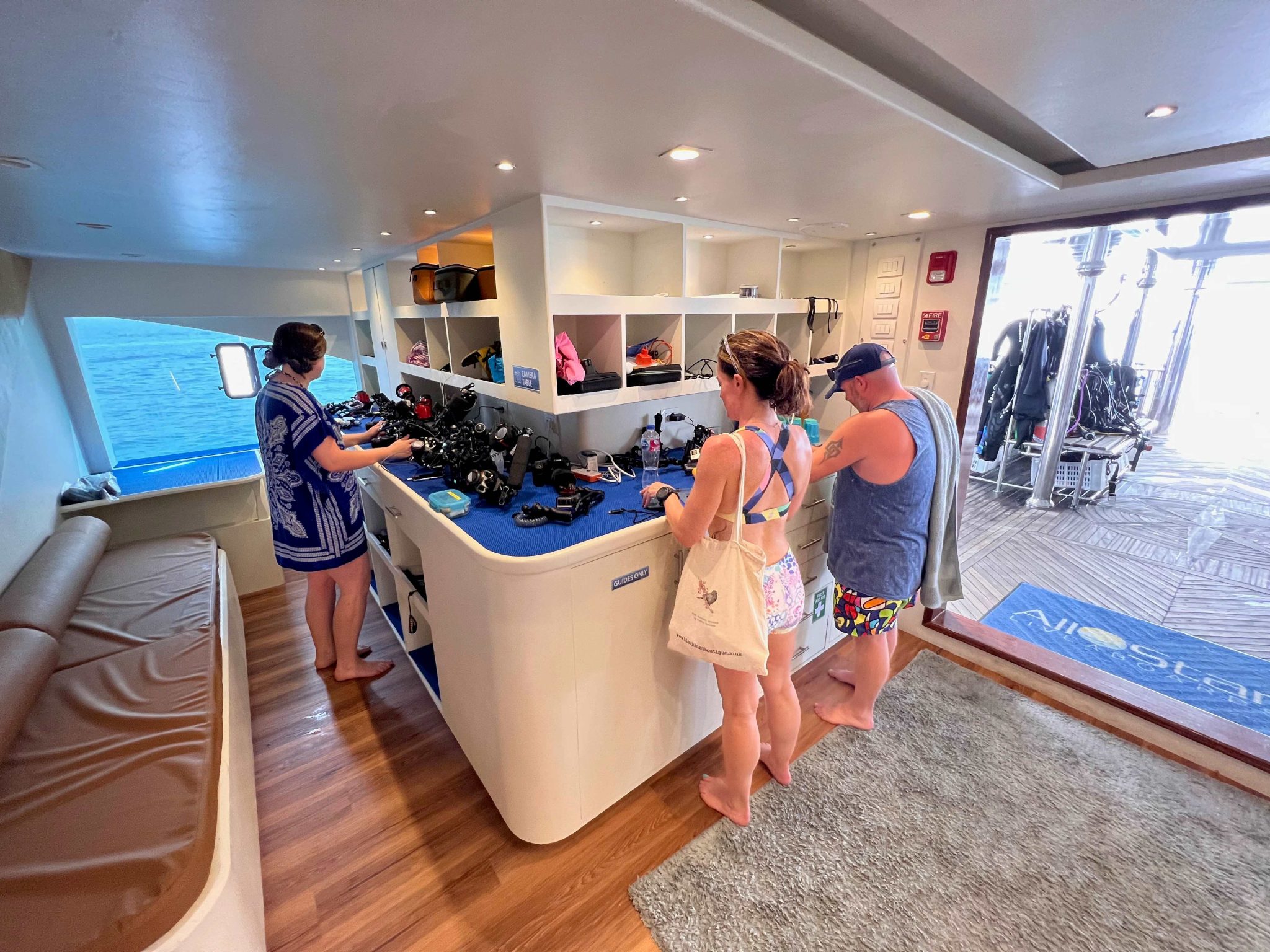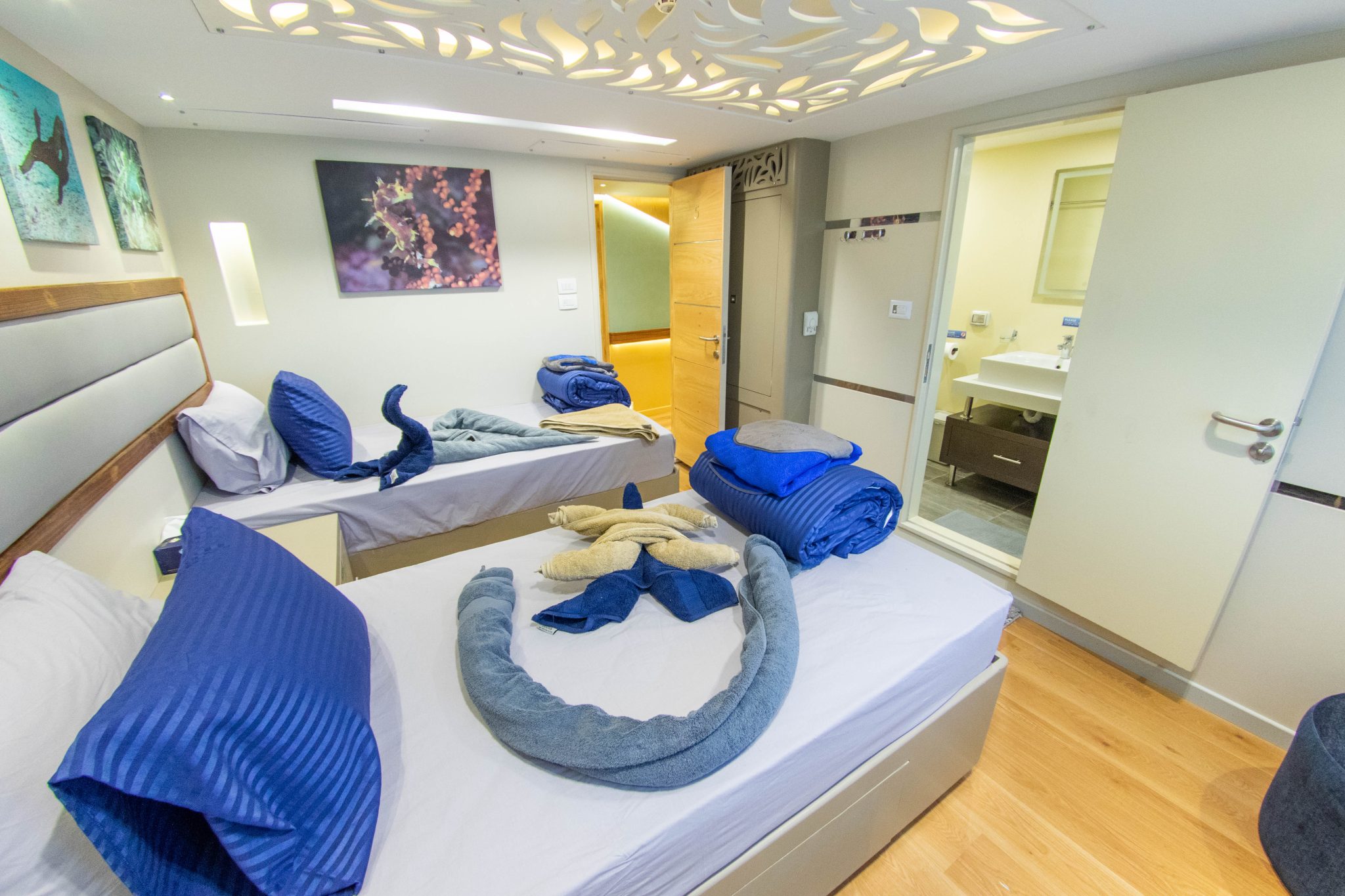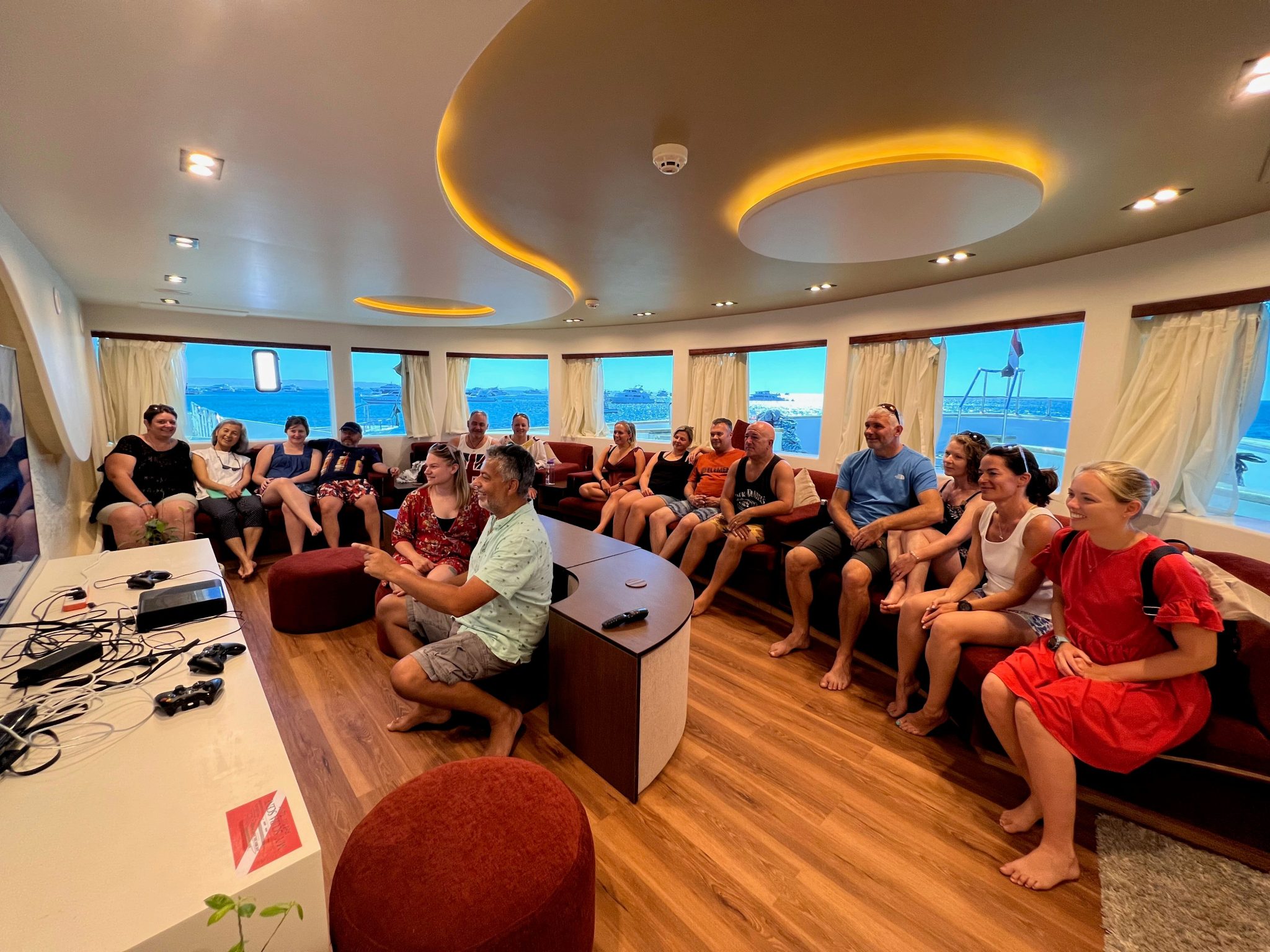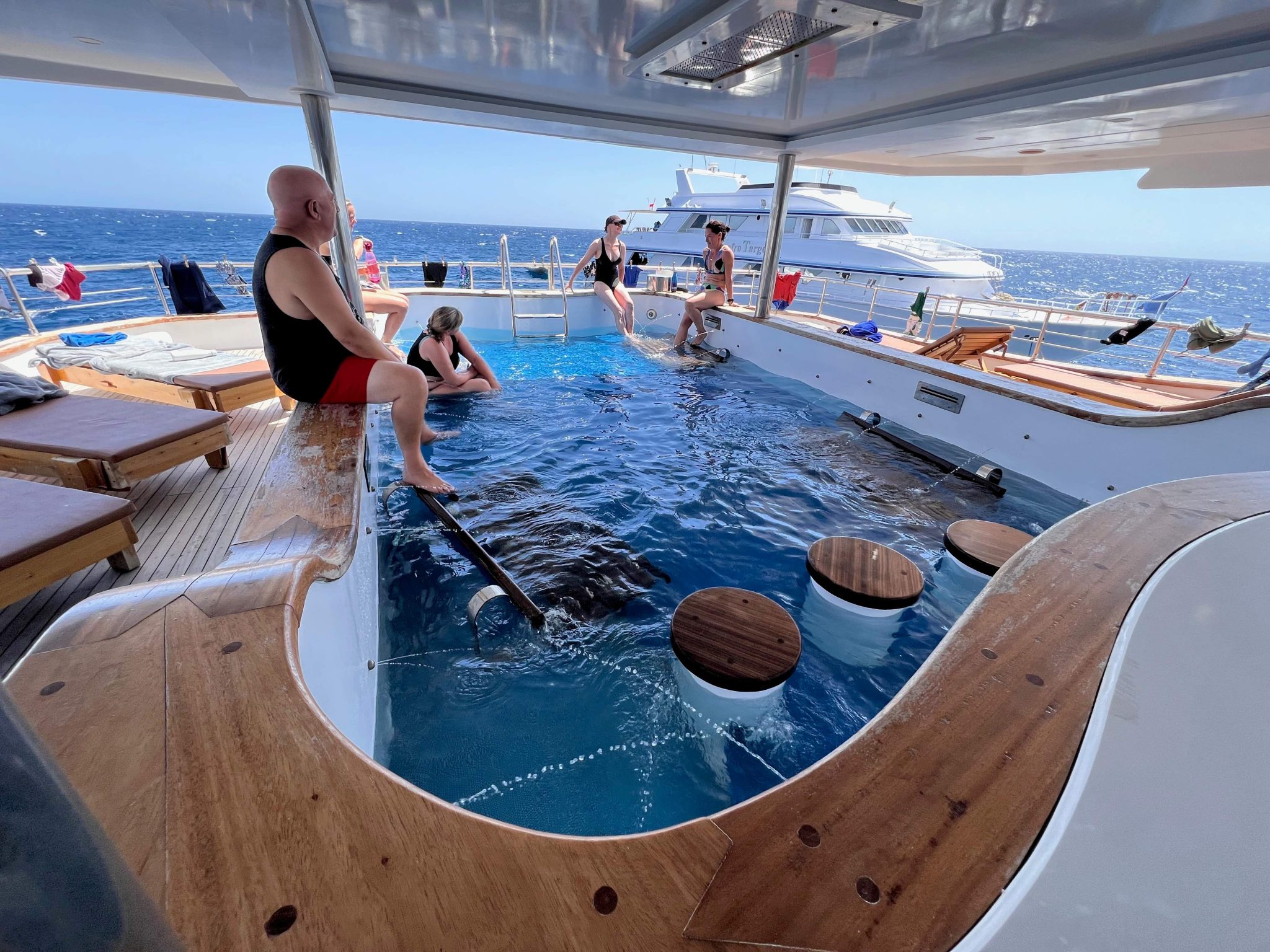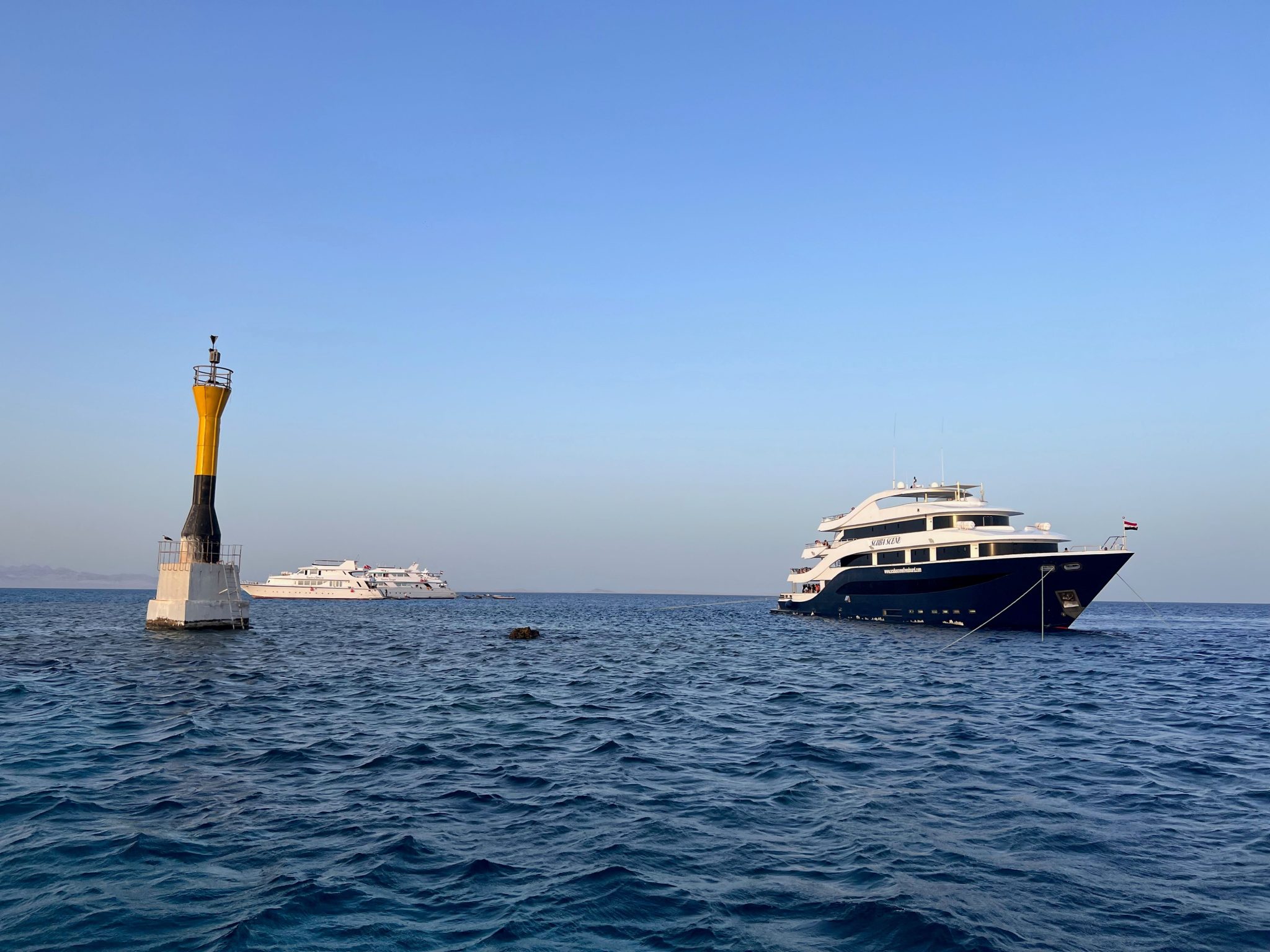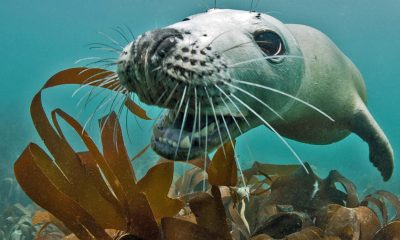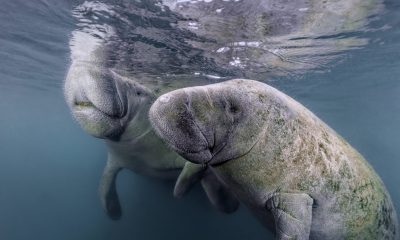Blogs
My week on Scuba Scene: simply the best Red Sea liveaboard experience

Saeed Rashid is blown away by the first-class luxury Red Sea liveaboard, Scuba Scene.
I first dived the Egyptian Red Sea in 1997 on a land-based holiday, diving with Divers Lodge out of the Intercontinental Hotel. Our accommodation wasn’t as fancy as the Intercontinental; it was just a small, cheap affair a few miles down the road, with very questionable food! Each morning we were picked up by a minibus and driven to the Intercontinental where we had to collect our dive gear from the small dive centre and carry it down the jetty to our day boat. We would then slowly steam out to our dive site where we would do a couple of dives before heading back and carrying, rinsing and returning all our gear to the dive centre ready to do it all again the next day. It was a right faff. I remember seeing larger boats and being told that they were floating hotels and dive centres rolled into one. People would board them, not get off for a week, and all you needed to do was step into your gear that was permanently set up and fall into the sea. As far as I was concerned, this sounded like pure luxury, and I told myself that this was the diving I wanted to do from then on. A couple of years later, after managing to save up the £500 it cost to stay on one of these amazing liveaboards, I made it – and have never looked back.
Since my first outing, I’ve been incredibly fortunate to have stayed on many liveaboards all over the world, but the Red Sea is still one of the most important destinations. With literally hundreds of liveaboards operating throughout its varied waters, most divers I talk to book onto them regularly. As you can imagine, competition between boats is strong, and I had believed that the pinnacle of luxury already existed in the liveaboard world. Every year the food would get better, with some boats even having a dedicated pastry chef to give you your daily sweet treats. The crew would always be amazing, on hand to help at every moment and larger and larger inside spaces and cabins became more and more comfortable. In recent years, some boats even boasted Jacuzzi hot tubs for you to relax in at the end of a hard day’s diving. But on a recent trip, all my expectations were blown out of the water – there is a new boss in town, and her name is Scuba Scene.
Scuba Scene is managed by the incredible duo, Ahmed Fadel and Elke Bojanowski, who many of you will know from their days working for Blue O Two. Ahmed is a tech diving guru and his boats have always played host to some of the most intrepid deep divers in the world. Elke is the founder of Red Sea Sharks and the only scientist operating in the Red Sea studying oceanic white tips. Her knowledge of these amazing creatures is surpassed by none and her world-famous shark diving trips are a must for any shark lover. So, with these two in charge, you know that the boat is going to be good but Scuba Scene is even better!
I was lucky enough to be on probably the best northern Red Sea itinerary. North wrecks and Tiran, which takes in all the must-see spots, such as the Ras Mohammed marine park, Abu Nuhas and of course the old lady herself, the world famous SS Thislegorm. But I was most looking forward to diving the reefs of Tiran Island as I haven’t been there for many years. Laying just to the east of Sharm El Sheik, Tiran Island sits at the gateway to the Gulf of Aqaba, a deep water sea 180km long and 20km wide that’s in fact the northern tip of the Great Rift Valley that stretches 7000km all the way down to Mozambique. Although this area is easily reached by dayboat from the mainland, this incredibly rich and diverse stretch of water really needs to be visited by a liveaboard that gives you time to explore the four main reefs, Jackson, Gordon, Thomas and Woodhouse.
But before we got on the way, there were the all-important safety briefings. It’s impossible to ignore the fact that in recent years, there have been several boat incidents, and where in the past, I would often not pay full attention to the briefings, they have now become forefront in my mind. You would never know that Elke gives this briefing every week; it was informative, insightful, and even fun when we all had to try on our life jackets. That really is the best way to get someone to remember very important information. I know this is becoming a lot more standard these days, but it’s nice to see people using equipment instead of just being told about it. It was also clear why these demonstrations were really important, as several people had never put on a life jacket before.
A couple of guests requested a walk around to see some of the other safety equipment, and I tagged along. As well as the lifejackets, there are three 25-person lifeboats, and of course the two large speedboats we would be using for diving in the week, and with numerous flotation rings all over the boat, we were definitely covered in the unlikely case of an evacuation. Scuba Scene also has one of the most comprehensive firefighting systems I’ve ever seen. Smoke and heat alarms all over the boat feedback to a panel on the bridge, so if one is triggered, the captain can quickly see its location and inform the crew, who if needed can man one of the six fire hoses that cover every part of the vessel. It’s clear to see that a lot of thought has gone into the safety features onboard Scuba Scene, and I felt my trip’s safety was in great hands.
Our first days diving was, of course, a check dive to make sure we could all still go underwater safely. Often people dismiss these as uninteresting sites, but in my experience, these areas are dived much more often than other reefs and the marine life has gotten very used to us alien divers, meaning it’s possible to get much closer to the reef inhabitants than you would be able to at other locations. So next time don’t turn your nose up to the check dive – think of it as a great opportunity to meet your new fishy pals.
We were soon off to Tiran and the incredible diving there. As soon as I dropped in, I was reminded why I have always loved diving here. As I mentioned previously, the coral reefs of Tiran sit on the southern edge of the Gulf of Aqaba and are fed by the rich deep waters that surround it, meaning they always have abundant fish life and beautiful corals. Thick clouds of Anthias sweep back and forth over the reefs trying to hypnotise unsuspecting divers with their rhythmic movements. This beautiful and often overlooked orange fish is sometimes referred to as the Queen of the Red Sea and is one of my favourites; some say it used to be present in such large numbers the water would look red, hence the name, Red Sea.
While exploring the shallows with my buddy Elke, we came across one of the largest schools of masked butterfly fish we have ever seen. Often, these fish swim in pairs or sometimes in small groups, but this school of several hundred was a rare and beautiful sight that we enjoyed spending much of our dive with. Turning around and heading back towards the boat, it was lovely to see the large bright green lettuce corals which are abundant in the shallows, with gorgonian sea fans and soft corals liking the deeper walls and drop-offs. It’s always worth keeping an eye out in the blue here, as large pelagic fish will often be swimming by. I remember spotting a large school of massive yellowfin tuna here. Each fish must have been two and a half meters long; I have never seen tuna so big since. If you are lucky, hammerhead sharks can also be spotted in the area, especially around Jackson Reef. But as always, time underwater is never long enough and it’s time to surface. We are the only boat here, but even if we weren’t, it would be easy to spot our boat – underwater, her huge size makes her very recognisable.
Scuba Scene is no normal boat. We divers have some very specialised requirements and as you would expect, every part of this vessel has been designed with us in mind. When you step on board, you are presented with a vast teak dive platform with two full-size showers on either side, and not just shower hoses that drip water like you see on many other boats. Two rinse tanks right next to them allowing you to fully rinse your gear after each dive. . The kitting-up area is just above this, easily big enough to fit a maximum of 28 guests. Not that you would ever need to, as dives are always split into two groups, meaning there are never more than 14 guests getting ready at any one time, making this area feel absolutely vast. Just behind the dive deck is a camera room – yep, an actual camera room – with sloped cubbyholes so your gadgets don’t fall out if the boat rocks and charging points so everything is all in one place. As a photographer, this one feature on its own would guarantee my booking on this boat. For years I’ve had to take up valuable space in the saloon, getting funny looks from other guests for spreading all my camera gear around the seats and tables, but no longer; I now have my own space, and I am so happy.
Very often, sleeping accommodation on a liveaboard is below decks with the saloon above, but Scuba Scene has flipped the deck plan. This means there are no cabins below the waterline. Talking to some of the guests on the trip, this was one of the reasons they had booked, and had enabled some to experience the joy of a liveaboard for the first time because they never liked the idea of being ‘stuck down below’. This also means everyone is well away from the engine room and any noise, giving you a nice, peaceful sleep even when the boat is moving. Another unusual feature is that virtually all the cabins are the same, with twin beds that can easily be moved together to give a king-size double. A double bed, if available, was often something you had to pay a premium for, but not here. There are two cabins in the bow which have been designed as singles and where I stayed. Even as a single cabin it was still bigger than most other boats I have ever stayed on, with the same large ensuite bathroom with a lovely rainfall shower just as the rest of the rooms have. Gone are the small portholes, replaced with full-length panoramic tinted windows which are also used in the shower rooms, and it’s quite an experience showering while looking out at the fish on the coral reef you just dived. Don’t worry, there is a curtain for you to draw if there’s another boat alongside!
I know what you’re thinking – what if you wanted to get away from all the talk of diving (madness, I know)? Maybe watch a movie, or even have a quick game of Call of Duty? I’m pleased to say that Scuba Scene has you covered here as well. Tucked up at the bow is the boat’s very own cinema/games room, and not a pokey little cupboard either, but big enough to get everybody in. Although an amazing asset, this room was the one that was the least used on my trip and I had forgotten it even existed until the last night when I was challenged to a game of Mario Kart. Where this room could be very useful is if you had younger guests or a smaller group who wanted to do some bespoke training away from the main saloon so as not to disturb others.
What about the food you ask? I’m not sure I’ve ever been on a diving holiday and gone hungry. In fact, there is often so much food that I go home several kilos heavier than when I arrived, and nothing changes here. You literally want for nothing. Catering for a range of diets, steaks are cooked to your liking (and it really is some of the best steak I’ve eaten), but if you prefer a plant-based diet then you are absolutely taken care of just as well.
But I’ve left the icing on the cake until last. Scuba Scene has a swimming pool! Yeah, that’s right, it has an actual, real swimming pool. Okay, if I’m being honest, it’s a bit more of a splash pool, but it’s big enough to get a dozen of you in at the end of a hot day to cool off with an ice-cold Sakara Gold. This was a first for me, having been on dozens of boats with Jacuzzis which are great, but are not used as often as you would think, taking a long time to fill and only a few of you can fit in at a time (oh btw, Scuba Scene has one of these as well). This pool is filled with filtered seawater in a matter of minutes, meaning that whenever the boat is moored for a while the pool can be filled. Because of the nature of liveaboards, you don’t often get non-divers or divers who want a more relaxed holiday where they would maybe dive once and then sit around the pool. Well, we had exactly that on this trip, a non-diving partner who took the opportunity to occasionally snorkel and then indulge in the swimming pool. Talking to her at the end of the week, she said that the swimming pool made the trip very special and she didn’t feel left out from all the diving going on around her.
At 48.5m in length, Scuba Scene is one and a half metres under the legal length of a cruise ship, meaning she is probably the biggest liveaboard that anyone will ever build. As a cruise ship, vessels must conform to even stronger regulations, from permanent lifeboats hanging from davits to a much higher crew-to-guest ratio. All of these things would increase overheads and make the operation of these boats much less viable meaning we will probably never see super liveaboards cruising up and down the Red Sea.
The Scuba Scene website says, “M/Y Scuba Scene is spacious, functional and comfortable, with regards to the cabins as well as the public areas and the dive deck.” In my opinion, this is the most understated quote I have ever read. Scuba Scene is by far the most luxurious and well-equipped liveaboard I’ve ever been on. I love the boat so much I’m heading back next summer to run an underwater photography workshop on her – who’s with me?!?
To book a trip on Scuba Scene or a place on Saeed’s 2024 underwater photography workshop, visit https://oysterdiving.com/trip/scuba-scene-red-sea-egypt/.
Blogs
Diving redefined at TDEX Bangkok 2024: NovoScuba and Siam Diving Enterprises join forces to bring diving education to the next level
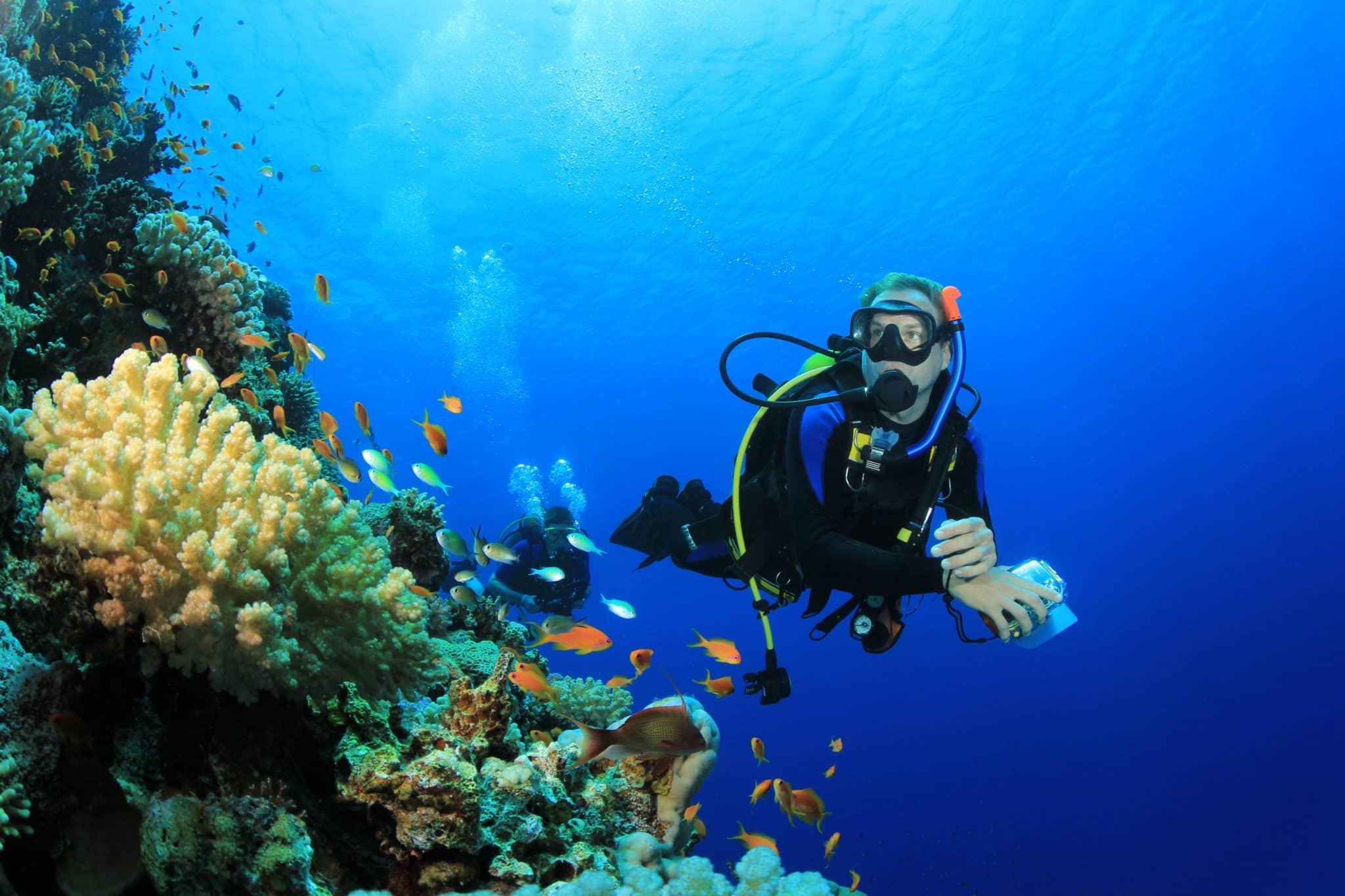
NovoScuba, a ground-breaking diving agency based in the UK, is preparing for the global debut of its innovative subscription-based training platform that is set to redefine the way diving education is provided. The much-anticipated launch will take place at TDEX Bangkok 2024, marking a significant milestone in NovoScuba’s journey to reshape industry standards.
As part of an important initiative, NovoScuba is pleased to announce a partnership with Siam
Diving Enterprises (SDE) and their renowned Ocean Store. SDE, as one of Thailand’s leading
suppliers of diving, freediving and snorkelling equipment, brings a wealth of expertise and
resources to this collaboration, furthering NovoScuba’s mission to elevate the diving experience for enthusiasts worldwide.
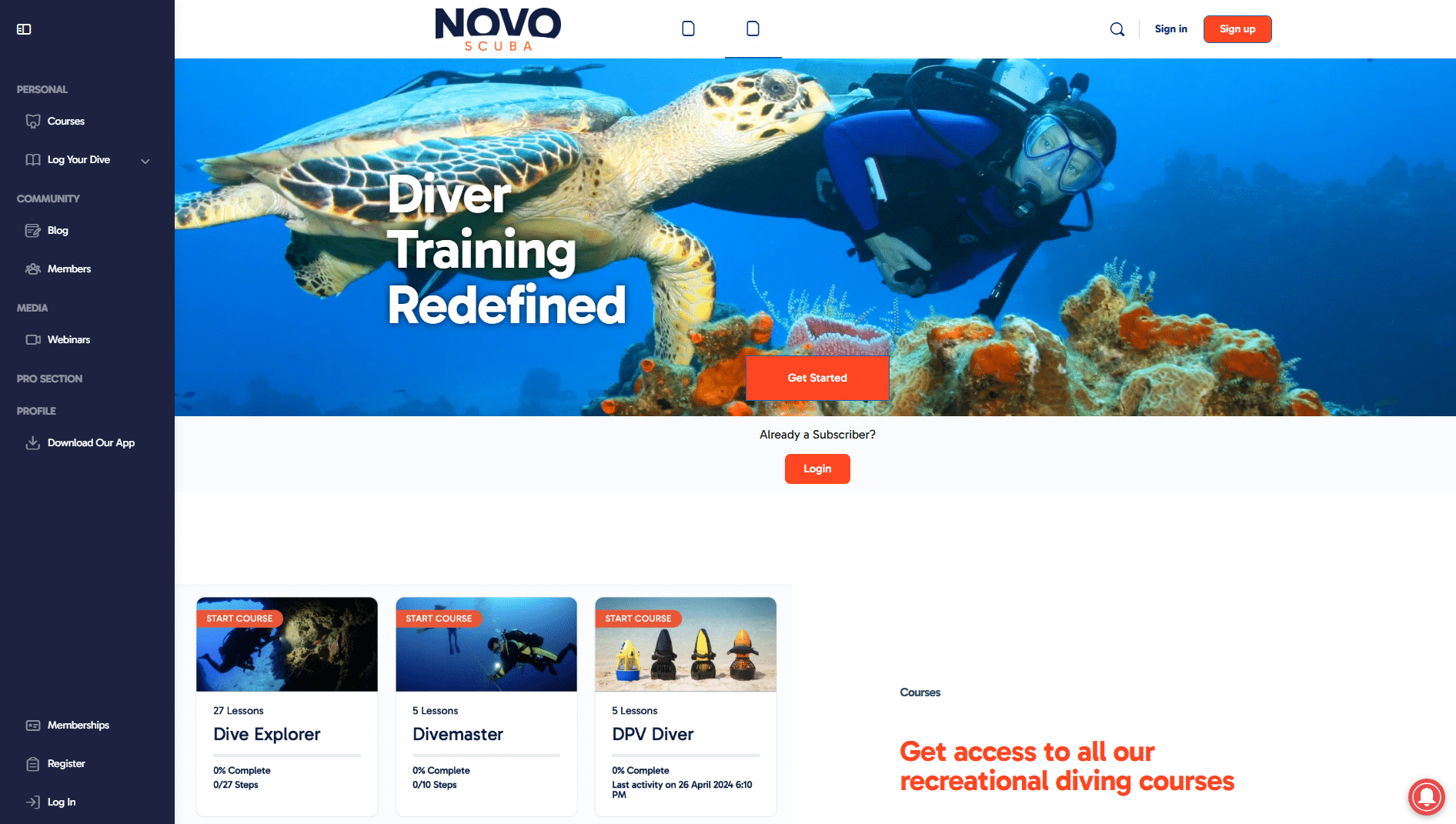
NovoScuba aims to revolutionise the way dive shop owners, dive professionals and dive
enthusiasts engage with diving, making it more accessible and profitable for the entire diving
industry.
 “NovoScuba is not just another certification agency; it’s a transformative force built on
“NovoScuba is not just another certification agency; it’s a transformative force built on
innovation and accessibility,” said Mark Spiers, founder and CEO of NovoScuba. “Our
partnership with Siam Diving Enterprises reflects our commitment to redefining diving education and empowering the diving industry at all levels.”
Siam Diving Enterprises, known for its extensive range of premium diving equipment from leading brands, will host NovoScuba at stand A74 during TDEX. This strategic collaboration offers divers a unique opportunity to experience first-hand NovoScuba’s groundbreaking approach to diving education.
NovoScuba’s platform offers state-of-the-art training programmes, including recreational and professional diving courses, designed to meet international standards and ISO certifications.
With a subscription-based model, digital learning materials available in 13 languages and
multi-platform accessibility, NovoScuba ensures that diving education is within reach for
everyone.
“We are inviting all dive enthusiasts, professionals and shop owners to join us on this
revolutionary journey,” added Mark Spiers. “Together we can redefine diving as we know it and
make a positive impact on the planet.”
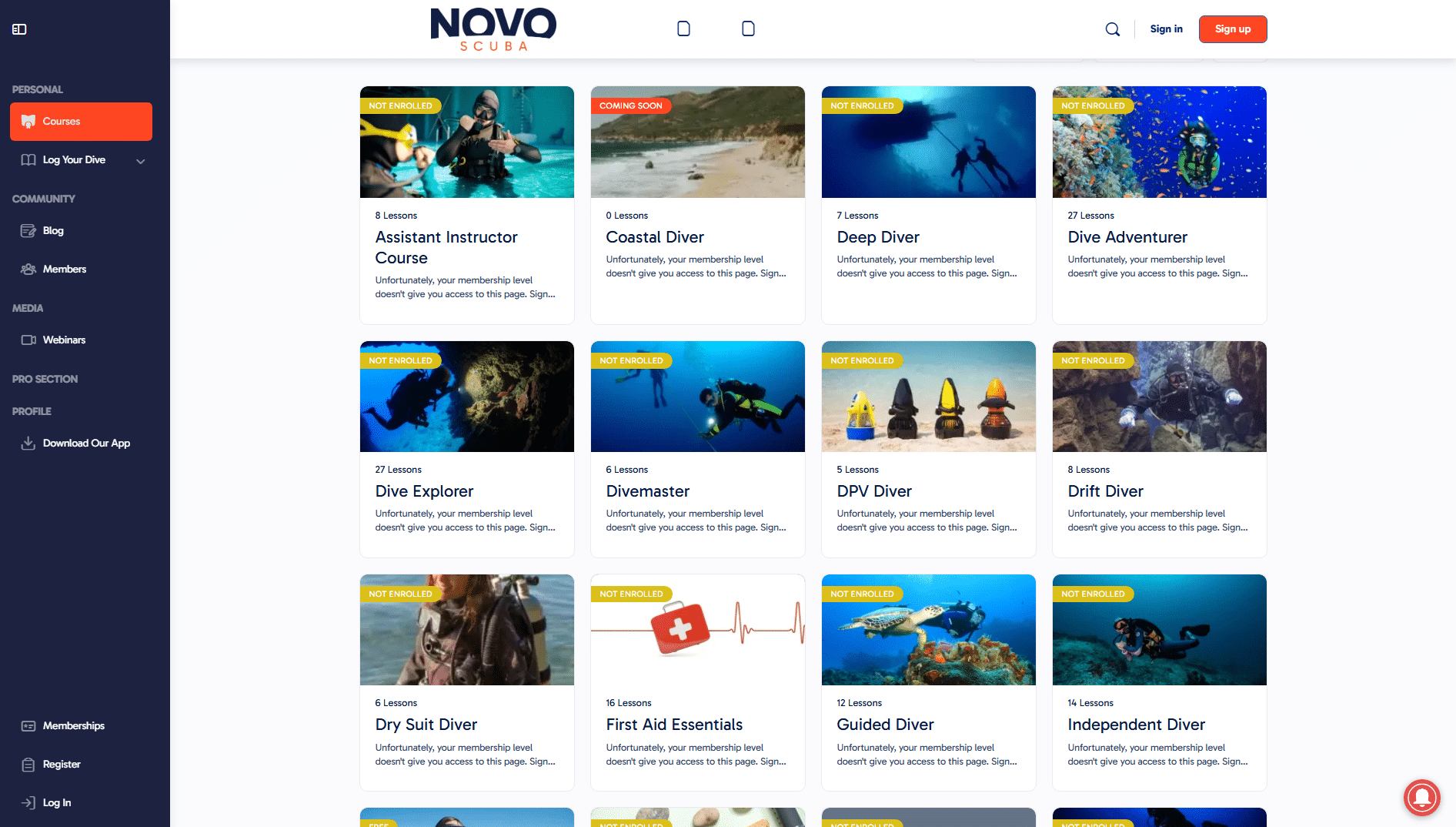
Visit Siam Diving Enterprises and NovoScuba at stand A74 during TDEX Bangkok 2024 to
explore the future of diving education and discover the latest innovations in diving equipment.
About NovoScuba: NovoScuba is a pioneering dive training agency committed to making
diving inclusive, accessible, and enjoyable for everyone. With a focus on innovation and
positive impact, NovoScuba offers state-of-the-art training programs, digital learning
materials, and a subscription-based platform designed to redefine the diving industry
worldwide. To learn more about NovoScuba’s innovations, go to www.novoscuba.com.
About Siam Diving Enterprises (SDE): Siam Diving Enterprises (SDE) is one of the
largest suppliers of scuba diving, freediving, and snorkelling equipment in Thailand. With
warehouses in Bangkok and a team of industry experts, SDE offers a comprehensive range
of premium products and exceptional customer service to diving enthusiasts across the
country. To learn more about SDE go to Ocean Store Thailand website.
Blogs
Wrecks’ Curse – The World of Wreck Diving
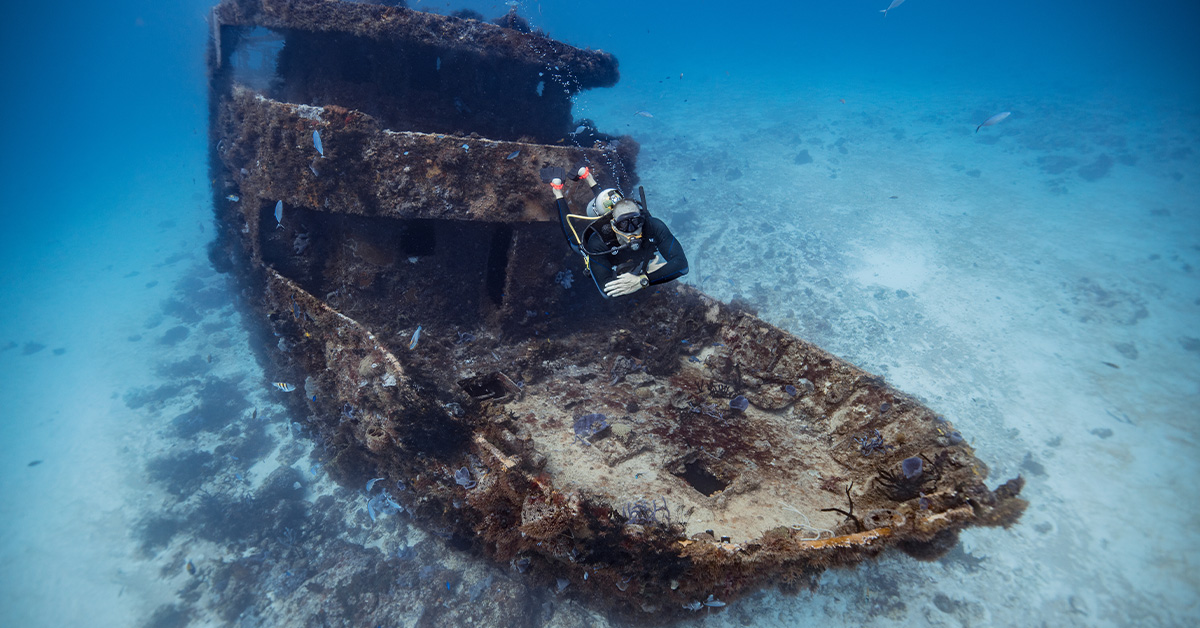
By Pablo Mir
We all enjoy those unexpected encounters that come with wreck diving, no matter how small, during our open water scuba dives. Exploring those nearly vanished remains of a ship scattered across the ocean floor is frequently the climax of the otherwise regular dive.
What is Wreck Diving?
Wreck diving involves exploring underwater shipwrecks while scuba diving. Sometimes, the wreck we encounter is more than just the remnants of a small and forgotten old vessel. Or perhaps we didn’t deliberately choose it, but the charter we boarded had that destination planned that day. The Benwood, less than 14 meters or 45 feet deep, in the clear waters of the National Marine Sanctuary in Key Largo, Florida, or the Copenhagen of Fort Lauderdale, also Florida, are good examples. Divers, many beginners who haven’t even devoted half a second to thinking about wreck diving, enjoy exploring their remains and the fauna that inhabit them. In some way, and at different levels, we all seem to potentially be wreck divers, even without a higher and explicit intention.
First Encounters: The Unplanned Dive into Wreck Exploration
But the trek is long and has many branches. Wrecks present themselves in vast possibilities, from shallow and clear waters to deep and dark ones. The Ancient Mariner, Captain Dan, U352, Great Isaac, Grecian, Lady Luck, Hyde, Aeolus, Hydro Atlantic, RBJ & CC, Algol, U869, and the Andrea Doria -the Grand Dame of the Sea- are some of the names that resonate among thousands in the minds of many wreck divers on the East Coast of the USA. For many of us, getting ready to traverse that path of increasing challenges, increasingly demanding environments, and more astonishing, transcendent dives is a life goal in terms of recreation.
A Diverse World: The Spectrum of Wreck Diving Experiences
Now, it is well known that the label of wreck diving is not only applied to shipwrecks. It is common to extend it to any artificial structure or piece of it that can be explored during our dives. For example, Texas Tower #4, an Air Force radar station off the coast of New Jersey, toppled in 1961 by a storm, is frequently visited by numerous local technical divers and visitors who want to test their skills in those demanding waters. Similar structures of different natures and purposes exist in many other places, with the most different levels of certification and experience requirements we can imagine.
Is Wreck Diving Dangerous?
Wreck diving is not inherently dangerous, but proper training is required. Describing with words the feeling of wonder and the adventure involved in wreck diving is not easy. In the same way that regular open water diving is the entry point to another world, a unique, fascinating world, wreck diving is also an entry point to one of the additional levels of enjoyment and fascination the world of recreational diving poses. Wreck diving, we live the adventures others just dream or fear. We are there, explorers of a distant land. Often, we witness the remains of real human tragedies; other times, we are visitors to the most wonderful amusement park we can imagine.
Learning Curve: The Path from Novice to Experienced Wreck Diver
Sometimes, watching groups of recreational divers exploring a wreck might seem like witnessing a scene from a pirate movie. Two or three divers here, two or three more there, ascending and descending along its sides, from bow to stern, sticking their heads in to look inside compartments and passages. In some cases, entering and exiting the bridge or any space allows penetration in areas with abundant natural light and generous access points. Their expressions and body language make it easy to notice that they are having a great time. There is no doubt they are enjoying it, and it will be an experience they will vividly remember.
If they are a group traveling together, an instructor or divemaster may be there to ensure everything goes well. The passion for exploration, for discovery, and that thirst for adventures we all have within us can sometimes hinder us in making our best decisions. Therefore, to become actual wreck divers, we must not only desire to do so but also have the will to learn and gain experience, slowly and safely, in everything this specialty implies. While it is true that exploring the exterior of a wreck may seem like something that doesn’t require specific training, the reality is that it does. Fishing lines, sharp surfaces, parts that can easily come off, suddenly disappearing visibility, disorientation, etc., are dangers we must have learned about, developed strategies to avoid, and implemented procedures to solve with the proper tools.
And so it will be; many will traverse the paths of wreck diving by starting with proper training. Sometimes, the first step is part of the regular advanced diver certification many divers take; other times, it is going straight for a wreck diving specialty. They will learn and start practicing, gaining experience and ease in their procedures. They will fall more and more in love with those twisted iron environments and proudly display the rust stains on their diving suits as if they were scars from a well-fought battle.
Deepening the Dive: Advanced Wreck Exploration Techniques
But the journey continues. Sooner or later, some will want more than just hovering around the wrecks. Crossing well-lit passages with the exit in sight will no longer be enough for them. What they recently may have told themselves they wouldn’t do will begin to intrigue them, and they will want to continue training “just in case.” They will want to start moving away from those open corridors and see with their own eyes what lies beyond. They will no longer see wrecks as enemies to overwhelm in large groups but as a mystery to unravel slowly, passage by passage, room by room. They will split into small groups. They pursue a specific goal, have a specific plan, and seek to minimize unexpected situations, and this is more controllable and achievable when done by two or three rather than four or five.
They will keep learning, venture through narrow passages, dodge cables and pieces of metal hanging from what is now the ceiling, and proceed cautiously to avoid stirring up sediments. They will use different methods to establish positions at crossroads, place strobe lights, carry multiple penetration reels, and carry substantial knives, the kind they used to laugh at not long ago, thinking they were unnecessary exaggerations.
The Wreck Diver’s Journey: A Path of Endless Discovery
Over time, they will penetrate deeper and deeper into larger, darker, gloomier, more frightening wreck structures, simply because they can. They will descend to greater depths because that’s where they are in better condition and farther away from the boarding hordes.
They will transition from Air to Nitrox, later return to Air, and later delve into the world of Trimix. They will start planning and executing dives with decompression stops, as otherwise, their bottom times will be insufficient for their intentions. From one decompression gas cylinder, they will move to two, and in some cases, three or more. Those who can afford it will buy rebreathers; those who can’t will stick to open circuit, carrying multiple large cylinders.
The Eternal Call of the Deep
But genuine amazement will hit them hard on the day they, thinking carefully about all the steps they have taken and accounting for the time and effort dedicated, conclude without a shadow of a doubt that it was worth it. It will be too late for them; they will have fallen victim to this curse of shipwrecks that has trapped so many. There will be no escape for them; from now on, they will be wreck divers without cure or remedy. They will be condemned to spend the rest of their vacations and days off among twisted irons at the bottom of rivers, lakes, and oceans. Cheers buddies! And a warm welcome to all those newcomers to recreational diving who, unknowingly, may be destined to wander among old wood and rusted metal, seeking to put out that thirst for real-life adventures.
To find out more about International Training, visit www.tdisdi.com.
Main Image: William Drumm/International Training
-

 Gear Reviews1 month ago
Gear Reviews1 month agoGEAR REVIEW – Revolutionising Diving Comfort: The Sharkskin T2 Chillproof Suit
-

 Blogs3 weeks ago
Blogs3 weeks agoDive Indonesia Part 3: Dive into Lembeh Trip Report
-

 Blogs2 months ago
Blogs2 months agoMurex Resorts: Passport to Paradise!
-

 Blogs3 months ago
Blogs3 months agoDiver Discovering Whale Skeletons Beneath Ice Judged World’s Best Underwater Photograph
-

 News3 months ago
News3 months agoPADI Teams Up with Wellness Brand Neuro to Drive Ocean Change and Create a Blue State of Mind
-

 Marine Life & Conservation3 months ago
Marine Life & Conservation3 months agoSave the Manatee Club launches brand new webcams at Silver Springs State Park, Florida
-

 Blogs2 months ago
Blogs2 months agoSeagrass Awareness Month brings critical food source for Manatees to centre stage
-

 Blogs2 months ago
Blogs2 months agoSOMABAY: Scubaverse interviews Wolfgang Clausen, General Manager, ORCA Dive Clubs


